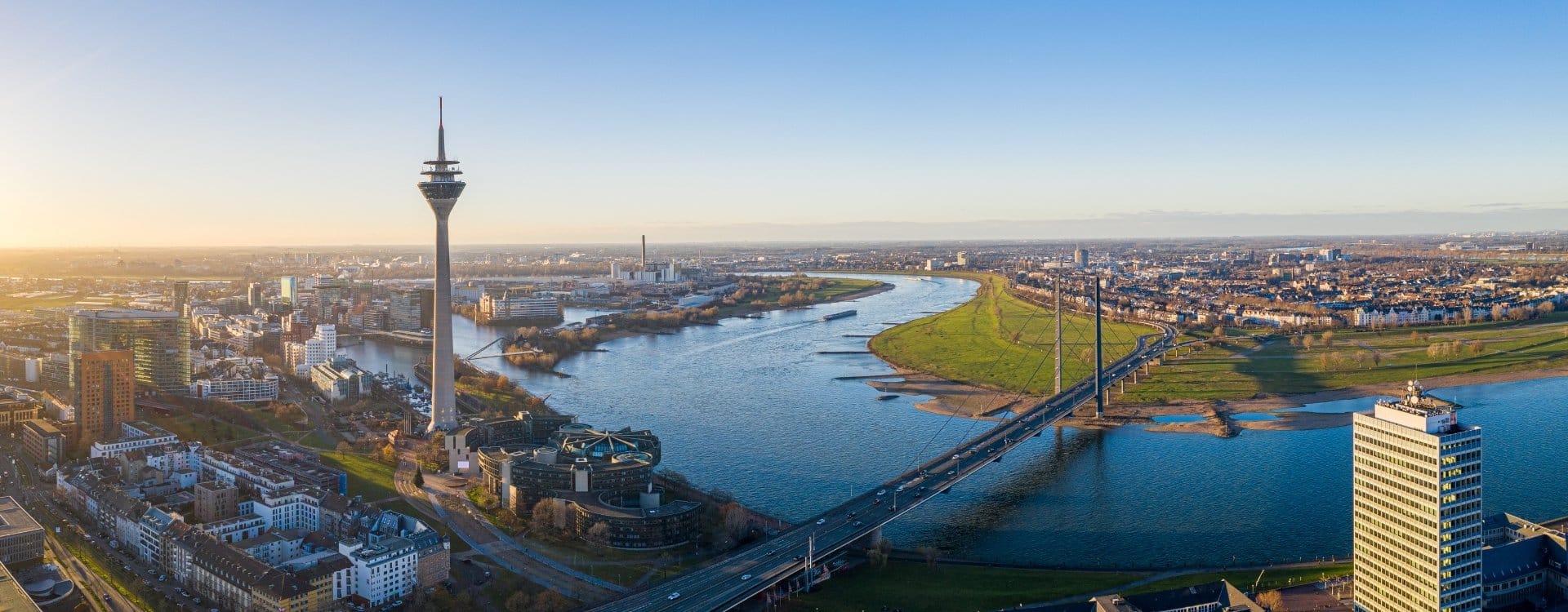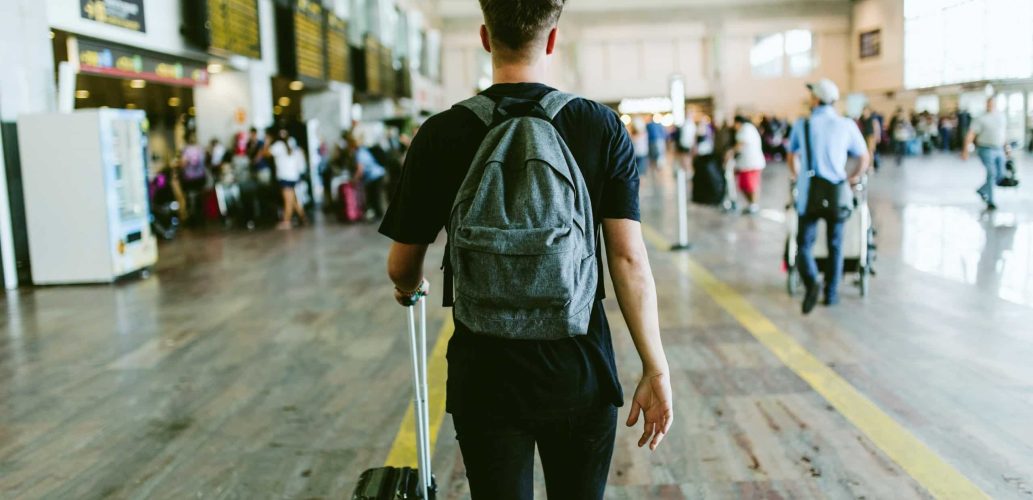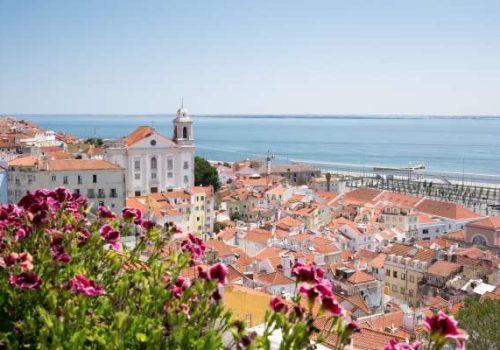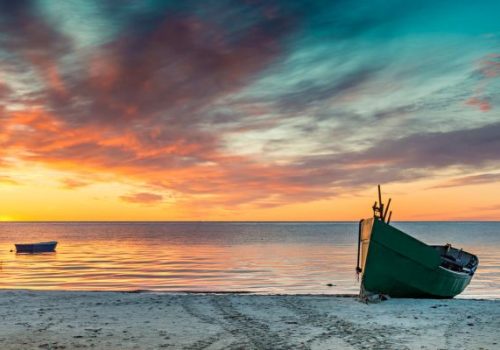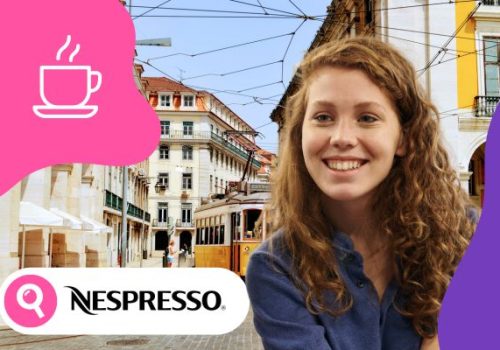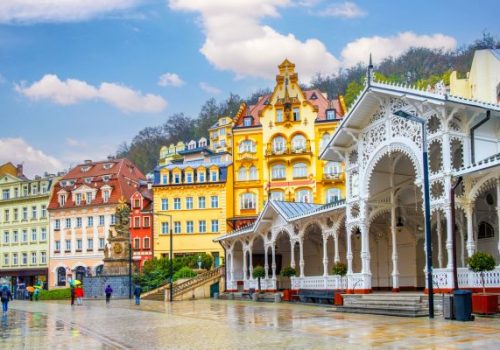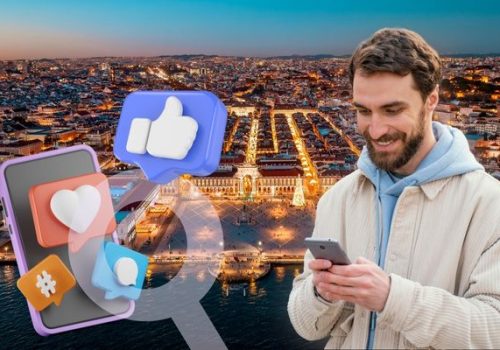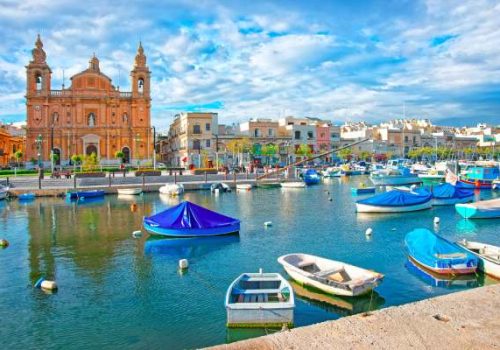Paris and London are great, but Europe has other cities that are just as interesting and cosmopolitan. With an increasingly globalised world, it’s no wonder that more and more people prefer to move abroad to try their luck in other countries. It doesn’t always have to be to earn more money, but often it can be to gain new work experience, and also to experience another country and culture, by living and working in a new city abroad. Culture clashes, new colleagues and more qualifications on your CV, such as a new language, are some aspects of living and working abroad. Sometimes, an experience abroad can even lead to your dream job and make you stay in the country for a longer period than you initially planned.
We’ve listed 5 unlikely cities in Europe that are often overshadowed by bigger and more popular metropolises. These 5 cities have also made various lists of the world’s best places to live and work. As well as being top cities with a strong economy and plenty of job opportunities, they are also relatively cheap to live in.
Are you keen to move abroad but not sure where you could live and work? Read on to find out what these 5 top destinations are and why they are so special.
P.S. All cities are in Europe and within the EU, so you don’t need a visa or work permit to live and work in them.
Jobs abroad
- Customer support
- Latvia
- Customer support
- Portugal
- Customer support
- Czechia
- Customer support
- Portugal
1. Eindhoven
Eindhoven has grown extremely fast in recent years. From being a small rural town, Eindhoven is now recognised as one of the most important cities in the Netherlands. With an estimated population of around 230 000, Eindhoven is also a technological city, with some of Europe’s most important technology companies (ASML and NXP) having their headquarters here. The city is also important for research, with a major technical university attracting many foreign students every year. It is also home to the largest start-up centre in the Netherlands, making Eindhoven an ideal city for creative, technological and highly educated people.
Eindhoven was originally just a small town in the Netherlands, but this changed in the early 20th century when an electronics company called Philips opened in the city. Industry became so important that Eindhoven grew in population and more and more new factories were added over time. The city was hit hard during the Second World War and was largely destroyed. During reconstruction, many historic buildings were replaced with new and modern ones, and nowadays the city is also known for its modern and technological design. Eindhoven is the fifth largest city in the Netherlands and the greenest of all the major cities in the Netherlands.
What makes the city so special (besides all the technology and startups) is that the infrastructure works perfectly here. You can get everywhere by public transport or by bike (we are in the Netherlands after all). Either way, it’s very easy and convenient to get around Eindhoven.
Interesting things to see and do if you live and work in Eindhoven
Stadswandelpark
One of the city’s most beautiful parks with a lake and many hiking trails to walk on.
Van Abbemuseum
One of Europe’s best museums of modern and contemporary art. A must if you are an art lover. The museum has over 700 paintings from artists like Picasso and Kandinsky.
Het Veem Food Market
Eat food from around the world or buy spices and other goodies in this large food hall. There are all kinds of culinary delights and something for every taste.
Philips Museum
The museum gives you a clear insight into the history of the city and the company, and how important it has been to the city’s development into one of the Netherlands’ top economic cities.
Nuenen
Located around 10 kilometres from Eindhoven, this small village is a characteristic little town where van Gogh lived for a while during his life. There is a museum dedicated to the artist and many historic buildings.
Work in Eindhoven
Eindhoven is a paradise for those who work in IT and technology, thanks to the multi-giant Philips that has left its mark on the city, but also laid the foundations for other important companies that have emerged here.
In Eindhoven, it is also possible to work in finance and HR (Human Resources). The city is also known for its artistic spirit and design, so if you like working with creative things, Eindhoven is the place for you. There are also many startups in the city and you also have the opportunity to start your own business here. Eindhoven has plenty of well-trained staff and plenty of premises, which is perfect for anyone who wants to start their own business.
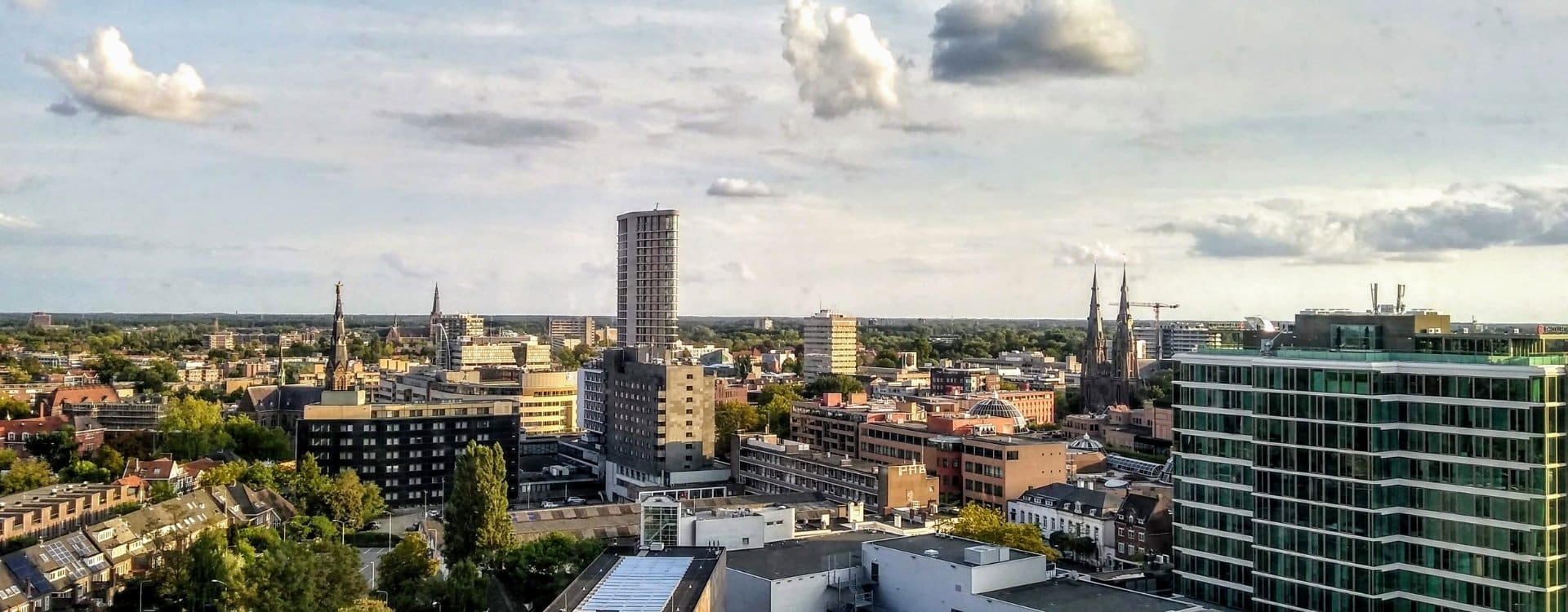
2. Brussels
Belgium’s capital is also the political capital of Europe, hosting both the EU and NATO headquarters. Brussels has 3 official languages (French, Flemish and German) and it is estimated that around 27% of the city’s inhabitants come from other countries around the world. Over 100 different languages are spoken in Brussels thanks to its large number of foreign residents. Only New York has more foreign residents (over 800 different languages are spoken in New York). In addition to its political influence in Europe, the city is also famous for its french fries (yes, french fries come from Belgium) and its beer breweries (there are over 800 different types of beer in Brussels). Some other gastronomic specialities you’ll find here are chocolate and waffles.
Interesting things to see and do if you live and work in Brussels
Parc du Cinquantenaire
The park was created at the end of the 19th century to celebrate the country’s 50th anniversary as an independent state. It has many exhibition halls, a car and military museum, and a triumphal arch. The park is the perfect break from city life, and you can even have a picnic here.
Cafe Belga
One of the city’s most famous cafés, it also offers great views of Brussels. Residents and expats alike gather here to enjoy a coffee and the best fries in town.
Go beer tasting
There are around 800 different beers in the city and Belgians are very proud of their beer. A beer tasting is a must if you live and work in Brussels. You’ll also get an insight into how the beer is brewed and you’ll go around to the best pubs in the city to drink beer. Not bad at all!
Museum of Fashion and Lace
A must for all fashion lovers. Discover the history of fashion through different clothes and materials. Embroidery was once one of the city’s main industries.
Grand Square (Grand-Place)
Brussels’ main square is also the heart of the city. It is home to the city hall and a large flower market on certain days of the week. The square is a UNESCO World Heritage Site and is considered one of the most beautiful squares in the world.
Working in Brussels
As Brussels is home to the headquarters of both the EU and NATO, it goes without saying that many people are keen to work in these institutions, but it is also possible to find jobs as interpreters, in communications and in other local businesses in the city.
The working environment in Brussels is often multilingual and relatively relaxed. You can enjoy 5-6 weeks of holiday per year and the work-life balance is excellent.
Some large companies located in Brussels include Deliotte, Proctor&Gamble, Tata Consultancy and IBM.
3. Zurich
Zurich has been voted one of the world’s best cities to live and work in for several years running. That’s because in Zurich you can enjoy clean water, good chocolate and a good quality of life. Did you know that muesli was invented in Zurich and that the world’s biggest techno party is held every year in Zurich? In August, the otherwise quiet city streets are filled with people dancing and listening to techno music at the popular street parade festival.
Zurich’s history dates back some 5000 years, when the first humans began to settle around Lake Zurich, which is adjacent to the city. Around 58 BC, the Romans took over the site and turned it into a customs station for both travellers and goods going into another Roman province. In the 12th century, Zurich was one of Europe’s most important trading centres, trading between Holland and Italy. During the Reformation, the city welcomed many religious refugees and, thanks to the large number of foreign residents, Zurich developed into a centre for the textile industry.
Today, Zurich is one of Europe’s most important cities in terms of research and development. Google and Disney are some of the major companies based here.
Interesting things to see and do if you live and work in Zurich
Botanical Garden of the University of Zurich
The botanical garden has more than 8,000 plants, ranging from Mediterranean plants to tropical plants. The three dome-like greenhouses date from the 1970s and are characteristic of the garden. There is no charge to visit the garden, and you can also have a snack in the university canteen.
Zurich Opera House
This neoclassical building dates from the late 19th century and on the façade you can see sculptures by Mozart, Wagner, Shakespeare and Weber. The best way to experience the building is by going to an opera performance. You have the chance to go and see 250 performances in a year so it’s just up to you to pick and choose.
Old Town
This is where the city’s history is and it’s also where the old mixes with the new. Here you can shop, eat and go out in the evenings.
Uetliberg mountain
Only 30 minutes away from the city centre, the mountain gives you fresh air and a great view of the city, Lake Zurich and even the Alps.
Zurich-West
This is the city’s creative and trendy neighbourhood. Old factories and industries have been torn down and parks and other entertainment venues have been built. If you’re into second-hand and vintage, you’ll absolutely love this neighbourhood.
Work in Zurich
In Zurich you can work with a lot of things. There are many banks and insurance companies here, so the financial sector is very important and provides work for thousands of people every year. Zurich is also home to some major universities (Zurich University, ETH, University of St Gallen), which are important for research and IT. The city is also home to several multinational companies that have their headquarters here. Some international companies in Zurich are Pfizer, Google, Microsoft, IBM, BMW, Volvo so you can apply for jobs directly on their website. Some other important sectors in Zurich are also architecture, media, commerce and customer service.
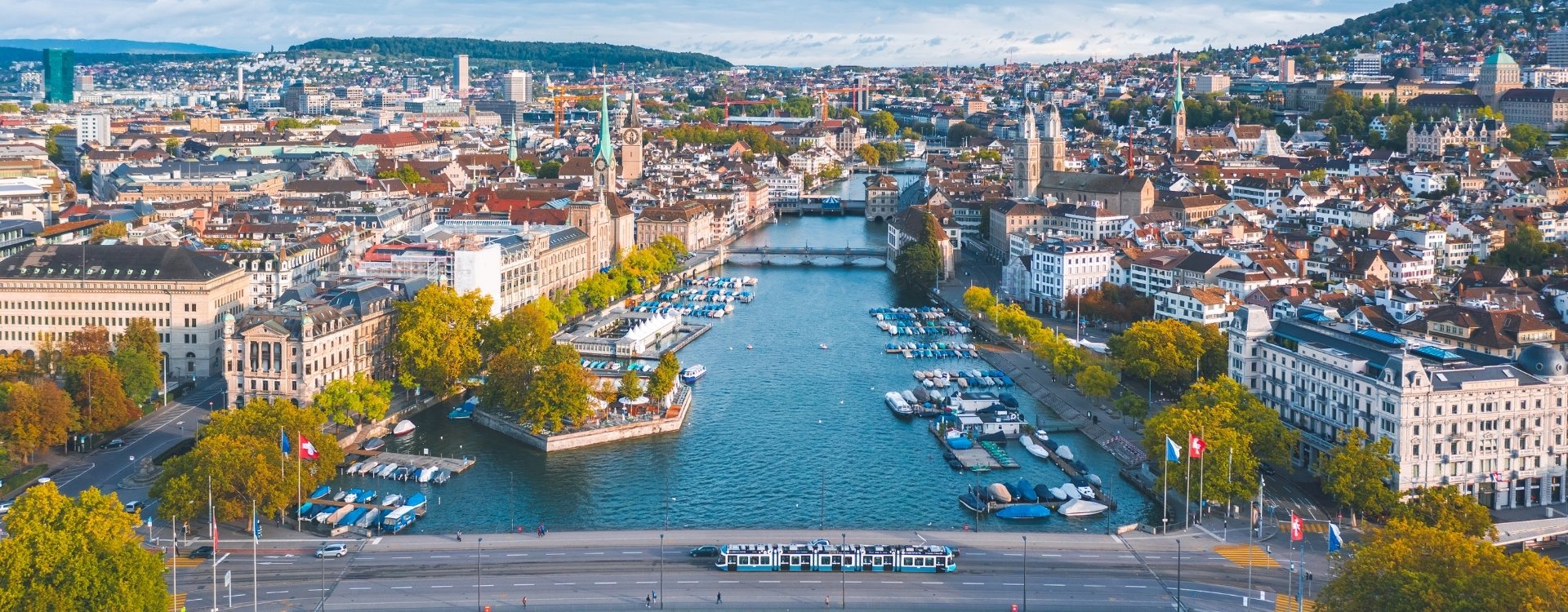
4. Ljubljana
The Slovenian capital is a relatively small city with around 300 000 inhabitants. Located at the foot of the Julian Alps, Ljubljana is a very green city. Slovenia is 60% forested and Ljubljana was voted Europe’s greenest capital in 2016.
The world’s oldest wooden wheel has been found in Ljubljana and after careful research it has been concluded that the wheel is around 5000 years old. Around 2000 BC there were already larger communities where the city’s suburbs are today, and in 50 BC the Romans founded an important military base here, which was later destroyed by the Huns. You could say that the city has been given its distinctive character by different peoples such as Romans, Germans and Slavs.
Today, Ljubljana is Slovenia’s economic and administrative centre, with important industries in pharmaceuticals, petrochemicals and food processing. Tourism is also an important source of income.
Interesting things to see and do if you live and work in Ljubljana
Ljubljana’s modern and new look is mostly due to a major earthquake that devastated the city in the late 19th century. Slovenia’s capital was then rebuilt and the city took on a more modern look. Surprisingly, Ljubljana is a very environmentally friendly city and no cars are allowed in the centre (most public transport is electric). If you live and work in Ljubljana, you can easily get around by bicycle as the city has a well-developed cycle network with many roads.
Here are some fun places to visit if you live and work in Ljubljana:
Tivoli Park
This is the largest park in Ljubljana and also features a beautiful pond and a tropical greenhouse. You’ll also have the chance to see different species of birds when you’re in the park. There are also many hiking trails and several beautiful buildings.
Central Market
Indulge in fruit and various food products at Ljubljana’s largest and most important market. The market is open every day except Sundays and is a real treat if you live and work in Ljubljana.
Museum of Modern Art
Located near Tivoli Park, this museum is a must-see for all art lovers. The exhibition starts with the First World War and then moves on to the Second World War, the Tito regime and up to the country’s independence in 1991.
Šmarna Gora
This small mountain is located 10 kilometres outside Ljubljana and is 600 metres high. On the eastern side there is an old church from the 18th century and a restaurant. The views and nature around it are outstanding.
The Old Town
Ljubljana’s Old Town is full of history, cobbled alleys and many shops and restaurants. Strolling around the old town both during the day and in the evening is a must if you live and work in the city.
Working in Ljubljana
In Ljubljana you can work in various sectors such as the industrial sector, the service sector and the financial sector. The Ljubljana Stock Exchange, owned by the Vienna Stock Exchange, is another important source of income. In recent years, many expats have been able to work in marketing, customer service, IT and social media in Ljubljana.
Some important companies in the city are Deloitte, Microsoft, IBM, Freelancer and EY.
5. Düsseldorf
Düsseldorf is probably best known for being one of Germany’s top financial and commercial centres, but did you know that it is also a very creative city? With over 400 advertising agencies and a renowned art academy, Düsseldorf has produced many famous names such as Joseph Beuys and the famous pop band Kraftwerk.
Düsseldorf is also a shopper’s paradise for all fashion lovers and here you can find all the famous names and fashion boutiques.
Düsseldorf is easy to reach by train, with more than 1000 trains stopping and departing from the main station daily. If you like to party, you’ve also come to the right city. It’s home to the world’s longest bar. Or rather, a 1-kilometre stretch of the old town packed with bars, restaurants and nightclubs.
Situated between two rivers, the Rhine and the Düssel, Düsseldorf is also a major trade fair city with several different fairs held here annually. The airport is Germany’s third largest and an important connection point to many countries in Europe and North America.
The city grew in the 6th and 7th centuries as small villages, devoted to fishing and farming, expanded and eventually formed the city of Düsseldorf. Today, Düsseldorf is Germany’s seventh largest city and hugely important to German business, with many major international companies based here.
Interesting things to see and do if you live and work in Düsseldorf
Benrath Castle
The castle is only 10 kilometres away from the centre of Düsseldorf (you can reach the castle by public transport or by car) and has 3 museums you can visit (the garden museum, the natural history museum and a museum about the history of the castle). The castle is built in baroque style and has a large and impressive garden.
Beach walk along the Rhine River
If you live and work in Düsseldorf, you must take a walk along the Rhine River (especially in the evening) and enjoy the beautiful views. This is a popular activity both among residents and tourists visiting the city.
Düsseldorf Art Museum
Here you will find art from 300 BC until today. Paintings, sculptures and photographs take you through our art history from Caravaggio to Andy Warhol and the art of today.
Japanese Garden in Nordpark
Düsseldorf has a Japanese community of around 11,000 people (permanent and temporary residents and ancestors of Japanese who have lived in the city) and is the city with the most Japanese residents outside Japan. Düsseldorf has also been home to over 500 different Japanese companies since the 1950s. If you’re looking for a different experience in Düsseldorf, the garden is certainly a different detour amongst all the modern architecture.
Tasting Altbier
There’s nothing wrong with a glass of beer after a night on the town, and while you’re in Düsseldorf you must have an Altbier, which is really just a dark, over-fermented beer. The name ‘Alt’ (old) comes mainly from the fact that the beer is brewed in an old-fashioned way. The best place to drink Altbier is in the old town.
Working in Düsseldorf
With a strong economy and many different sectors, Düsseldorf is a great city to look for a job in if you want to live and work in Germany.
Düsseldorf is a major trade fair city and also has an important international airport, which has also led to the city receiving a lot of tourists and visitors every year. Düsseldorf is also an important fashion city and is often referred to as the ‘little Paris’ thanks to its high concentration of fashion companies and boutiques.
Düsseldorf is a very creative and technological city with top companies such as Huawei, Vodafone, Ericsson, Esprit and Eurowings among some that you can find in the city.
